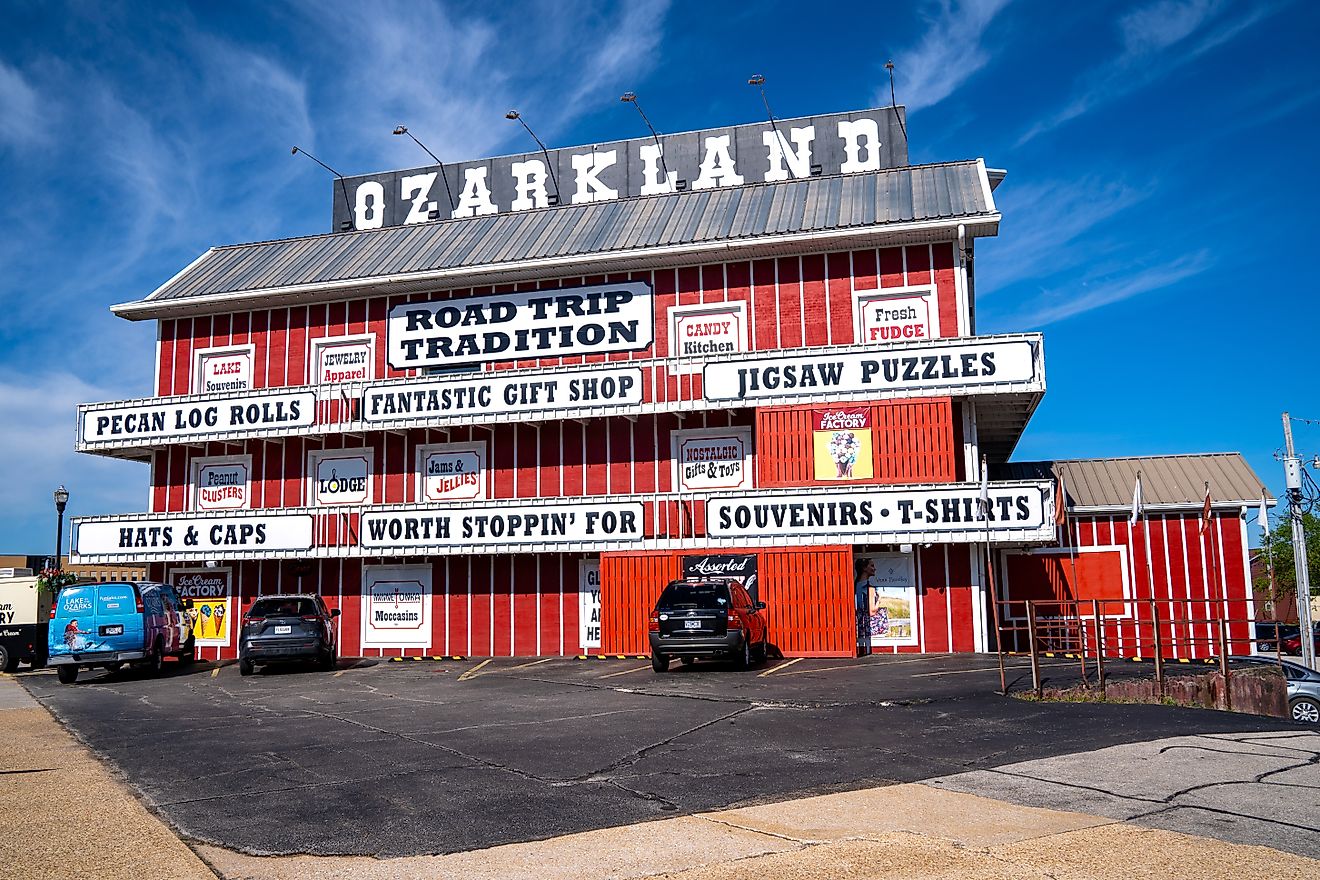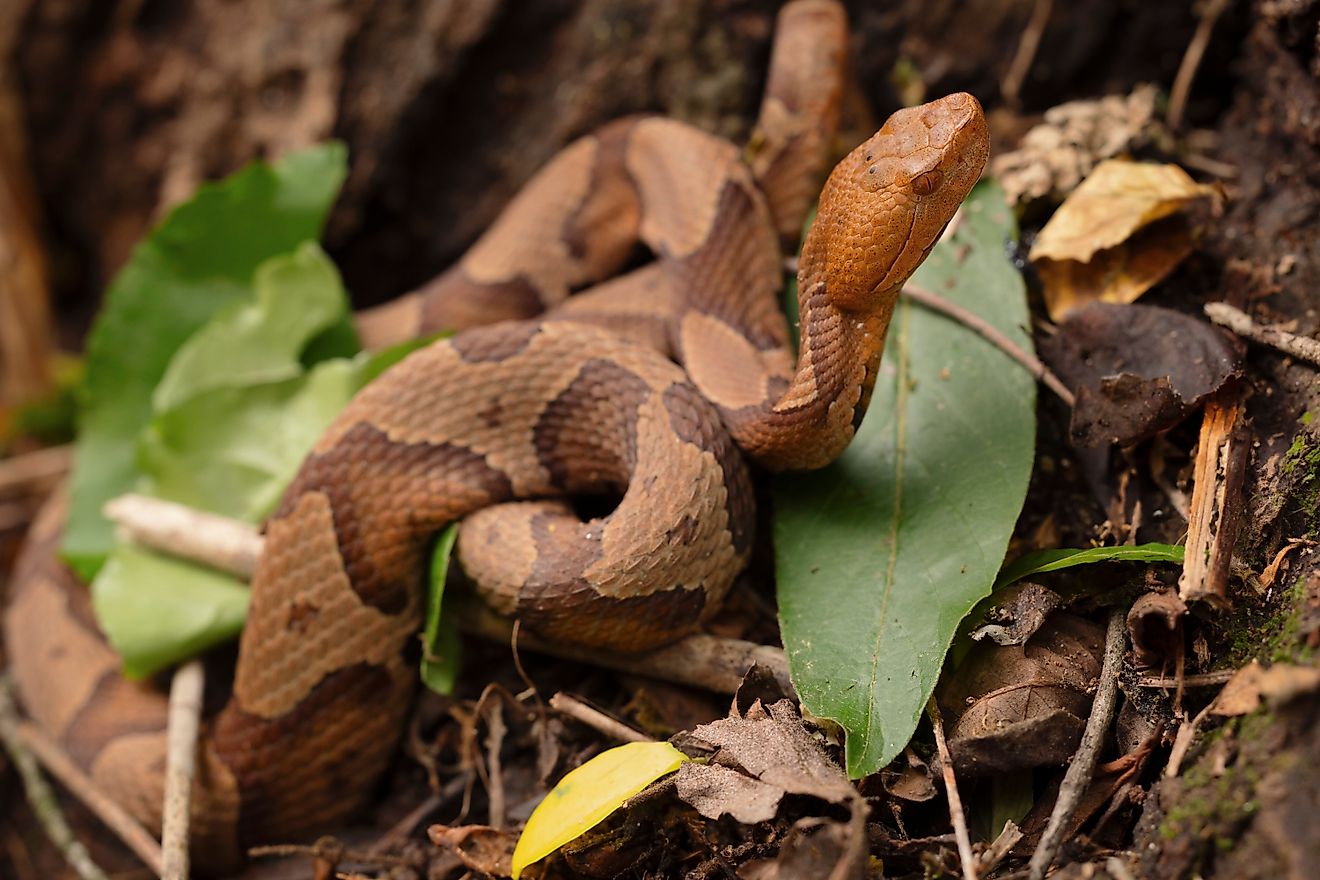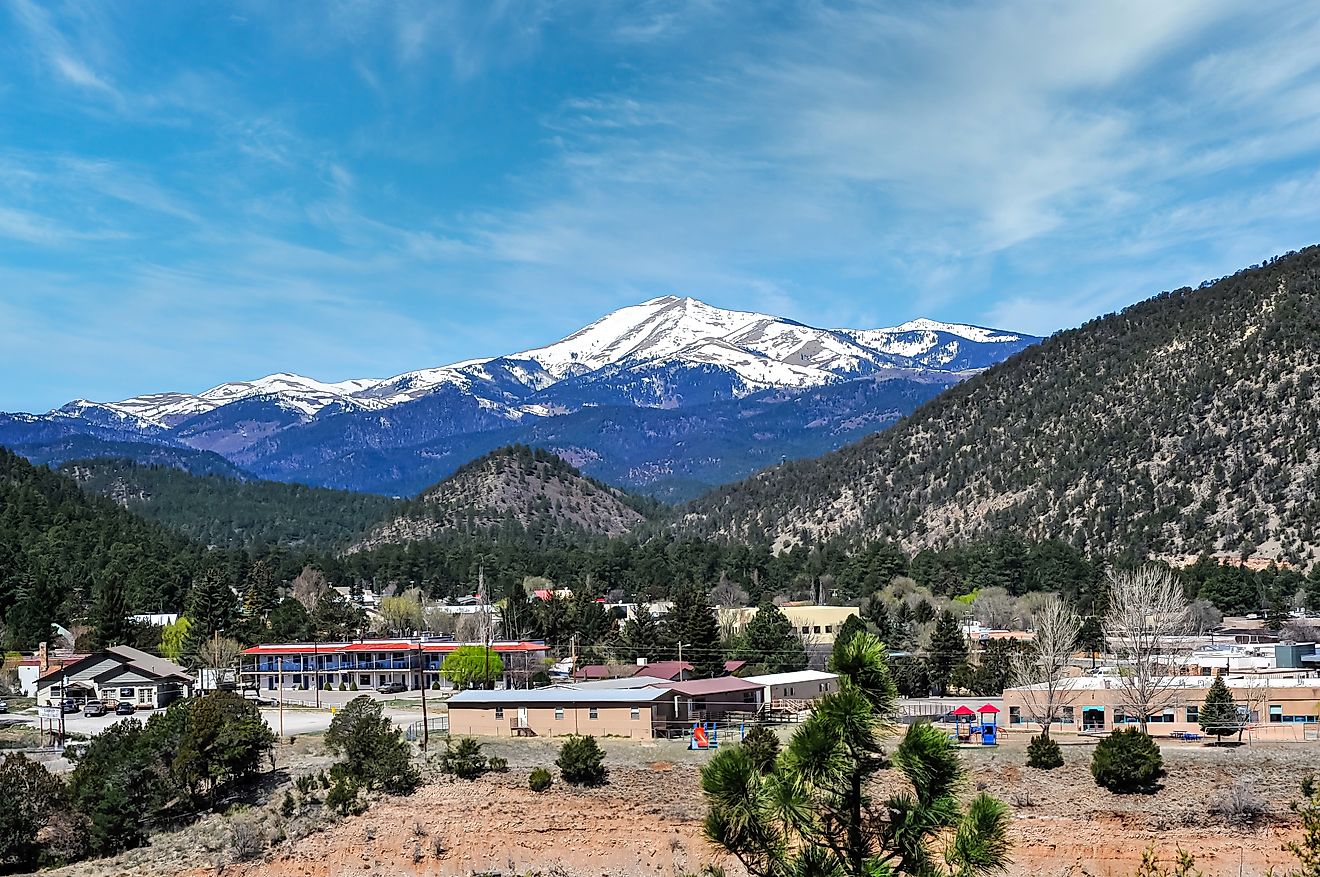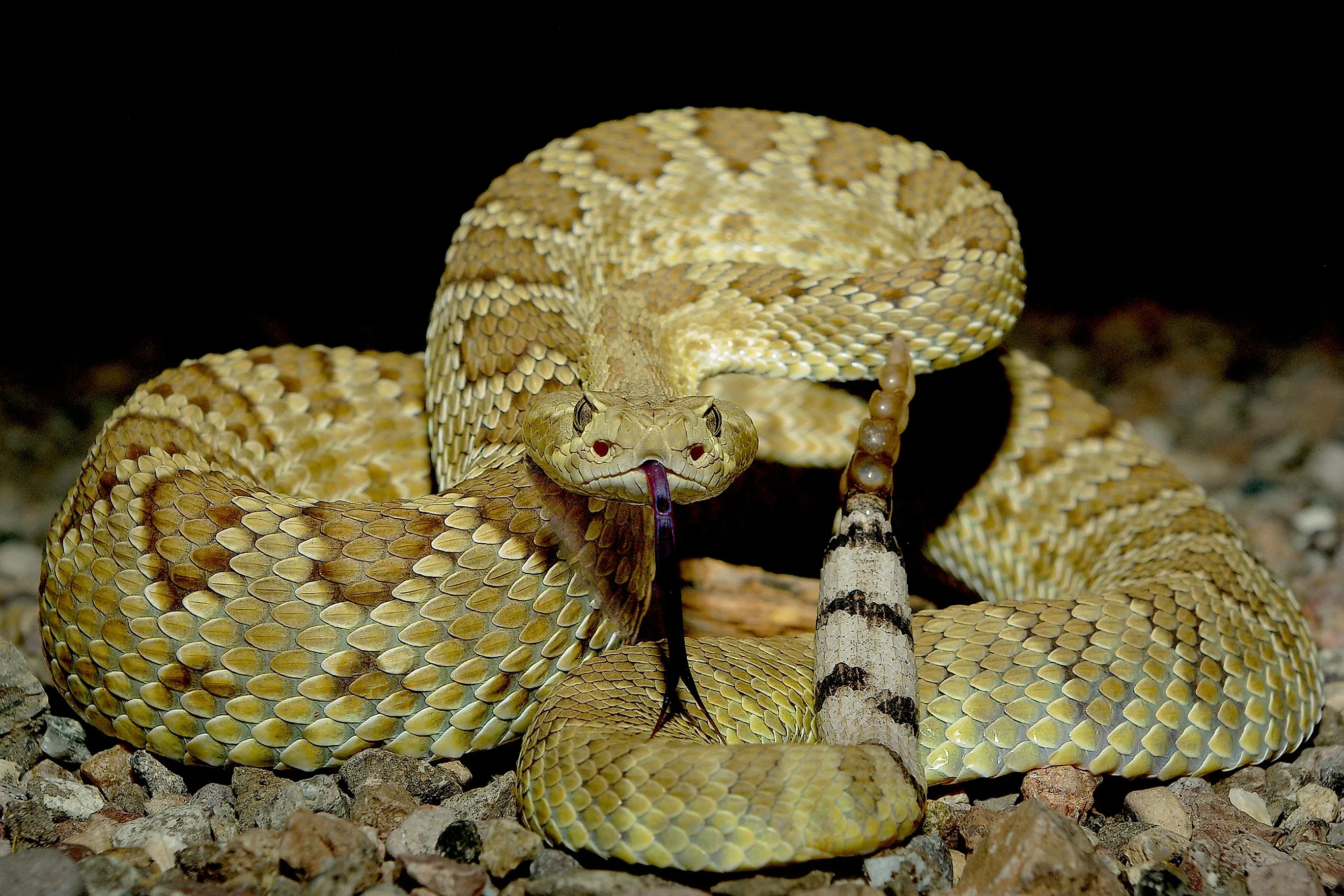
Which US State has the Most Venomous Snakes?
Snakes live all over the US, but some states have a higher concentration of them than others. While many species are harmless, others are incredibly venomous and pose a serious threat to humans and animals. In the US, a number of states are home to a large number of venomous species. Only Alaska and Hawaii are the exception where there are no native species. Here, we take a look at which US state has the most venomous snakes.
States With The Most Venomous Snakes
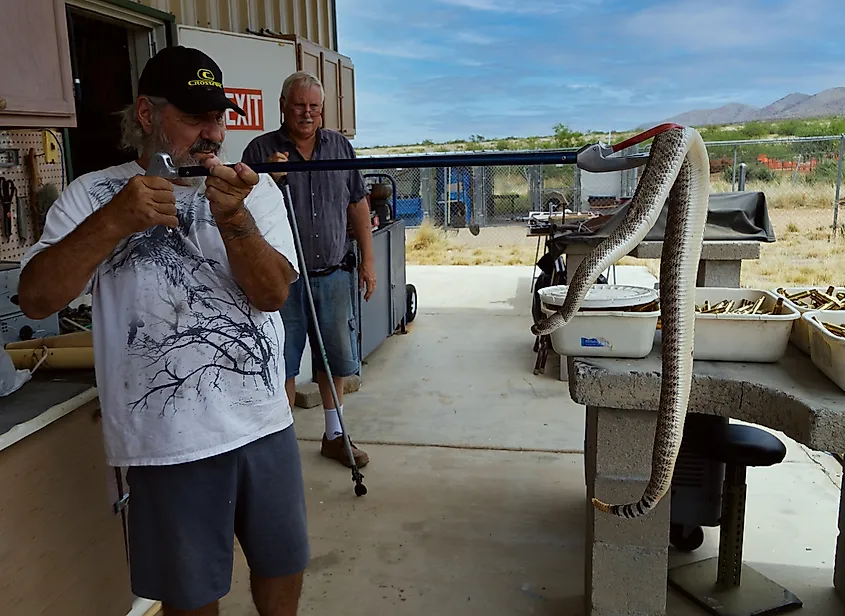
There is no one state in the US that has the most venomous snakes, as you can find various species in different regions of the country. The distribution of snake species varies greatly by many factors, such as climate, terrain, and human activity. However, states in the southern and southwestern United States, such as Texas, Florida, and Arizona, are known to have a higher diversity and abundance of venomous snakes, including rattlesnakes, cottonmouths, and coral snakes. The hot, arid climate is ideal for many species of snakes, and the states' varied landscapes provide a range of habitats for different species to thrive.
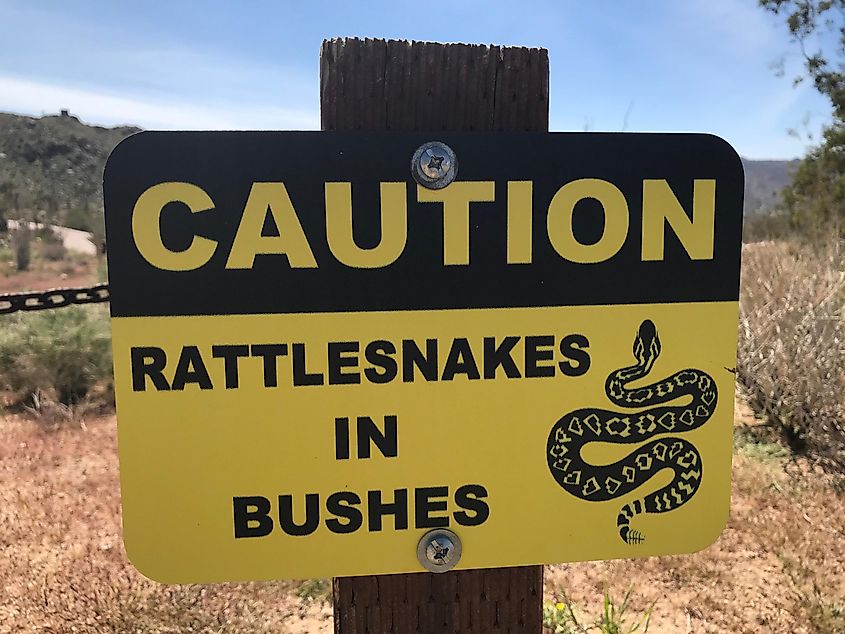
Speaking about quantity, Texas has the highest density of snakes of any US state, with an estimated population of over 800,000 snakes. This number covers both venomous and non-venomous species. Florida ranks in second place, with an estimated 600,000 snakes living there. The remaining three snake-rich states – Arkansas, Georgia, and Louisiana – make up the top five.
So, Texas takes first place by general snake amount. It is home to the most snake species (105 species and subspecies), including 15 venomous species. What about the place where the most venomous reptiles live? Arizona is known to have a higher diversity and density of venomous snakes compared to Texas. Some of the most venomous snakes found in Arizona include rattlesnakes, coral snakes, and Mojave green rattlesnakes, among others.
What Venomous Snakes Live In Arizona?
Arizona is the top state on our list of the most venomous snakes in America, with 19 of the country's 20 dangerous snakes. 13 rattlesnake species make the state home to more than one-third of all rattlesnake species worldwide. Although the majority of venomous snakes in Arizona inhabit desert regions, rattlesnakes can visit places like golf courses, and you can see them on the green.
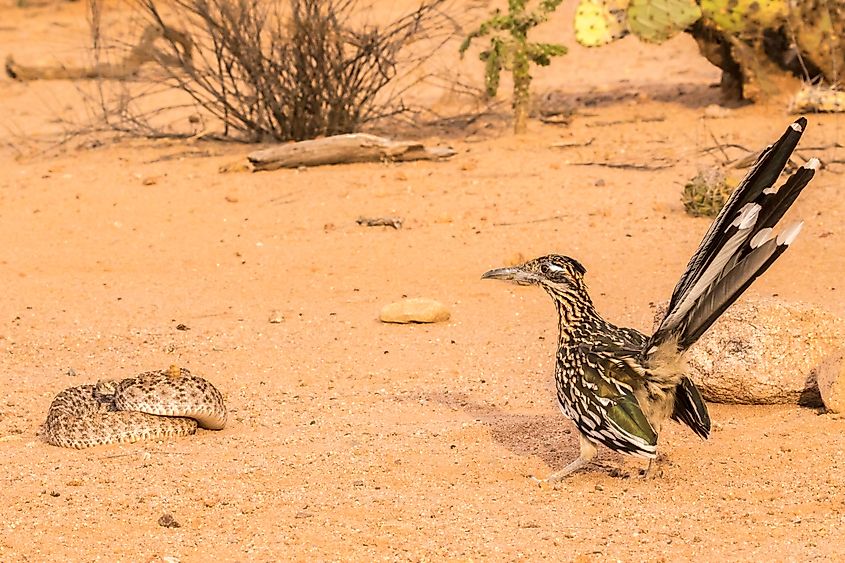
Venomous snakes of Arizona include: Arizona black rattlesnake, ridge-nosed rattlesnake, Colorado desert sidewinder, banded rock rattlesnake, Grand Canyon rattlesnake, desert massasauga, Great Basin rattlesnake, Hopi rattlesnake, Mojave rattlesnake, Mojave desert sidewinder, northern black-tailed rattlesnake, prairie rattlesnake, Sonoran Coral Snake, Sonoran desert sidewinder, tiger rattlesnake, southwestern speckled rattlesnake, western twin spotted rattlesnake and western diamondback rattlesnake. Here are 5 of the most venomous snakes found in Arizona:
Western Diamondback Rattlesnake
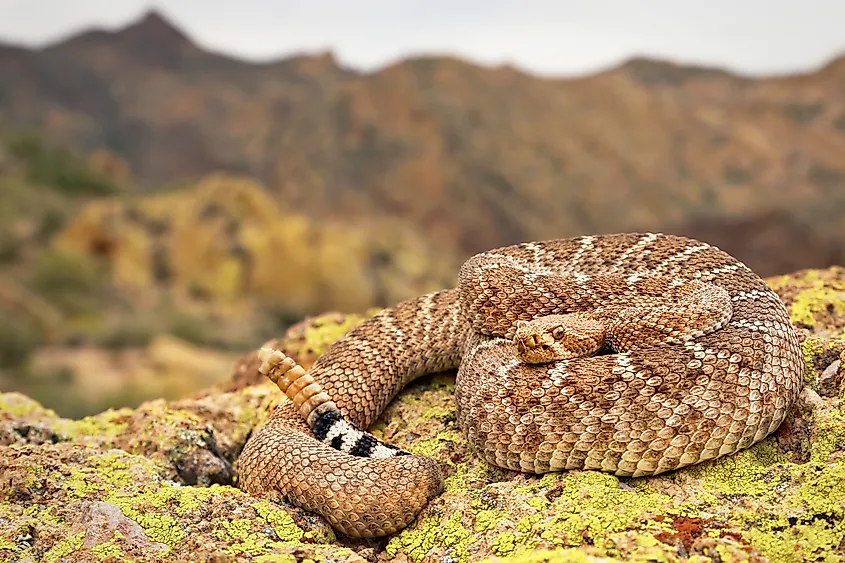
The Western diamondback rattlesnake (Crotalus atrox) is one of the world's most venomous snakes and is native to Arizona. It is one of the largest rattlesnakes and has a distinctive diamond-shaped pattern along its back. These snakes typically live in arid deserts and grasslands and feed on rodents. They are known to be aggressive when threatened and use their rattle as a warning before striking. The venom of this rattlesnake is highly toxic and can cause severe swelling, pain, and even death in extreme cases. However, fatalities are rare due to the availability of antivenom. It is essential to be cautious when hiking or camping in areas inhabited by these snakes.
Mohave Rattlesnake
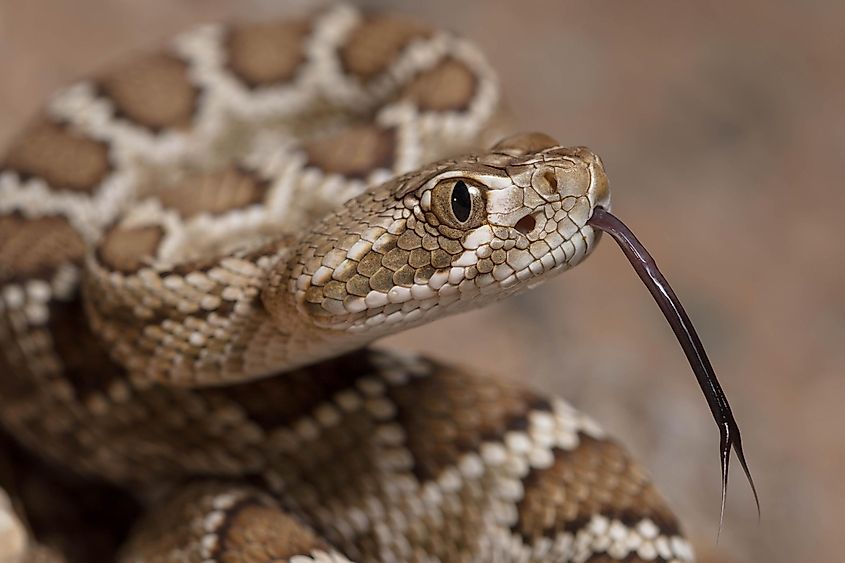
The Mohave rattlesnake (Crotalus scutulatus) is another venomous species found in Arizona. This snake is known for its aggressive behavior and potent venom. The venom is a powerful neurotoxin that can cause paralysis, breathing problems, and death. You will find Mohave rattlesnakes in the southwestern part of the state, most commonly in rocky areas. They are ambush predators, relying on their cryptic coloration and hiding spots to surprise their prey. The Mohave rattlesnake is an important part of the ecosystem, helping to control the populations of small mammals and reptiles. Conservation efforts are underway to protect this species and its habitat.
Sonoran Coral Snake
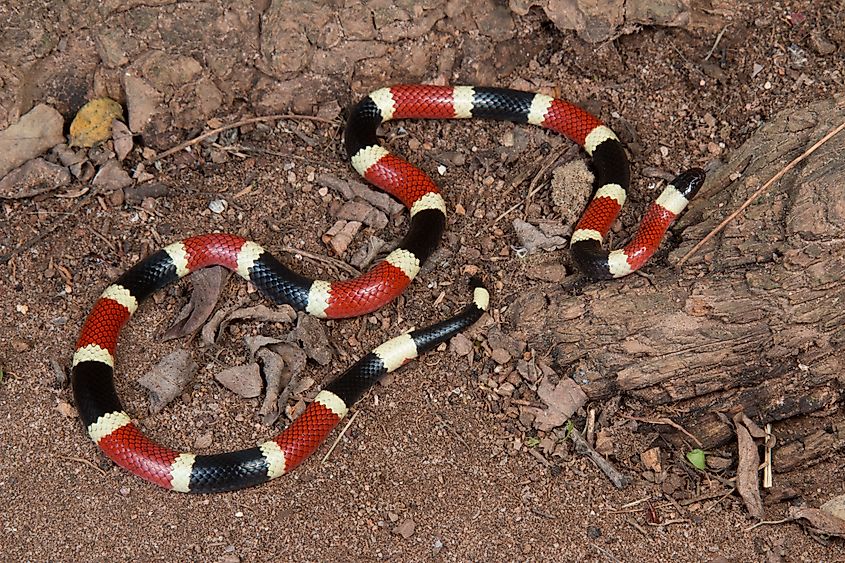
The Sonoran coral snake, also called Amazon coral snake (Micruroides euryxanthus) is one of the most venomous snakes in Arizona and is easily recognizable by its bright red, yellow, and black color pattern. It is small, approximately 2 feet in length, and primarily active at night. This snake is found in the southwestern part of the state and is known for its aggressive behavior. The venom of this snake is a powerful neurotoxin that can cause paralysis, respiratory failure, and death. Despite its dangerous reputation, you will not encounter it often, and bites are rare. Nevertheless, it is vital to take caution when in areas where the Sonoran coral snake may be present and to seek medical attention immediately if bitten.
Arizona Black Rattlesnake
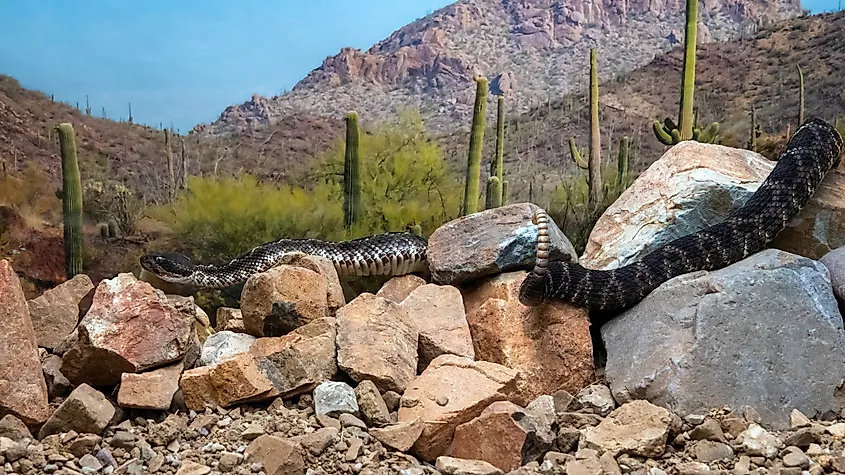
The Arizona black rattlesnake (Crotalus cerberus) is a venomous species found in the northern part of the state. It is known for its distinctive black color and rattle on the end of its tail, which it uses to warn predators of its presence. This species can grow up to 3-4 feet in length, and you can meet them in various habitats, including deserts, rocky canyons, and prairies. In spite of its reputation as a dangerous predator, the Arizona black rattlesnake is shy and will only attack if threatened. This snake is known for its potent venom, which is a hemotoxin that can cause swelling, pain, and death.
Western Rattlesnake
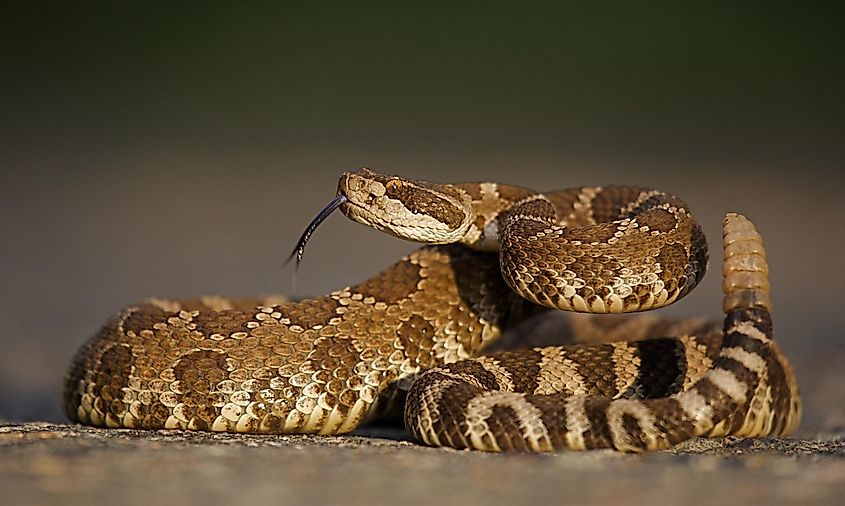
The Western rattlesnake, also called the Pacific rattlesnake (Crotalus oreganus) is another venomous species found in Arizona. You will also typically find it in the southwestern part of the state, most commonly in rocky areas. Western rattlesnakes can grow up to 3-4 feet in length and have variable color patterns depending on their habitat. They feed on small mammals, birds, and reptiles. These snakes are shy and will usually retreat if given a chance, but they will defend themselves if they feel threatened. Bites from Western rattlesnakes can be serious and potentially fatal, but antivenom is widely available and effective. It is important to give these snakes space and not provoke them, as they play an important role in controlling rodent populations.
Arizona is home to the most venomous snakes in the US. With a diverse range of species, a favorable climate, and a history of human development, the state is a hotspot for these fascinating and potentially dangerous reptiles. Whether you're a resident or just visiting, it's important to know the risks posed by venomous snakes in Arizona and to take steps to protect yourself and others.

